Cognitive Psychology: Short-term Memory, Retrieval, and Forgetting
1/84
There's no tags or description
Looks like no tags are added yet.
Name | Mastery | Learn | Test | Matching | Spaced |
|---|
No study sessions yet.
85 Terms
What is the Multi-store Model of Memory?
A framework proposed by Atkinson & Shiffrin (1968) that includes three memory structures: sensory memory, short-term store (STS), and long-term store (LTS).
What is the duration of information retention in short-term memory without rehearsal?
Approximately 15 seconds.
What is the 'magic number' in terms of short-term memory capacity?
7 +/- 2 items, as proposed by Miller (1958).
What is the primary encoding method used in short-term memory?
Acoustic verbal linguistic code (AVL), which involves sound-based encoding.
What is the significance of the Serial Position Curve in memory studies?
It demonstrates the primary and recency effects, showing that people remember the first and last items in a list better than those in the middle.

What is the role of rehearsal in short-term memory?
Rehearsal helps maintain information in STS and facilitates its transfer to long-term memory.
What happens to short-term memory when rehearsal is prevented?
Information decays rapidly, typically within 15 seconds.
What is the difference between reduction encoding and elaboration encoding?
Reduction encoding simplifies information (e.g., chunking), while elaboration encoding adds meaning or associations to the information.
What type of errors are most common in short-term memory?
Intrusion errors are usually acoustic, where items that sound similar are confused.
How does selective attention function in the context of short-term memory?
It allows individuals to select relevant information from sensory memory for encoding into STS.
What is the difference between short-term memory and long-term memory?
Short-term memory has a limited capacity and duration, while long-term memory can store vast amounts of information for extended periods.
What is the role of the hippocampus in memory?
The hippocampus is crucial for forming new memories and is often damaged in conditions like Korsakoff syndrome.
What was the Brown-Peterson Task designed to measure?
It was designed to assess the duration of short-term memory by preventing rehearsal through intervening tasks.
How does chunking improve short-term memory recall?
Chunking organizes information into manageable units, allowing for better retention and recall.
What is the relationship between rehearsal and the primary effect in the Serial Position Curve?
Items at the beginning of a list are rehearsed more, leading to better recall and transfer to long-term memory.
What are the primary and recency effects in memory recall?
The primary effect refers to better recall of the first items, while the recency effect refers to better recall of the last items in a sequence.
What is the impact of distraction on short-term memory recall?
Distraction can prevent rehearsal of the last items in a sequence, leading to their loss from short-term memory.
What is the significance of the Korsakoff patient case in memory studies?
It illustrates the effects of alcohol-induced memory loss and the distinction between short-term and long-term memory systems.
What is the difference between sensory memory and short-term memory?
Sensory memory briefly holds sensory information, while short-term memory retains information for a short duration with limited capacity.
What is the role of semantic coding in long-term memory?
Semantic coding involves encoding information based on its meaning, which enhances recall compared to other types of coding.
What is the effect of rehearsal on the transfer of information from short-term to long-term memory?
Rehearsal increases the likelihood of transferring information from short-term memory to long-term memory.
What are the characteristics of short-term memory as identified in cognitive psychology?
Short-term memory has a limited capacity (7 +/- 2 items), a brief duration (~15 seconds), and primarily uses acoustic coding.
What is the role of amnesic patients in understanding short-term and long-term memory?
They provide evidence that short-term and long-term memory systems can function independently, as they can acquire new long-term memories despite short-term memory deficits.
What is the difference between immediate memory span and short-term memory capacity?
Immediate memory span refers to the number of items recalled immediately after presentation, while short-term memory capacity refers to the overall limit of information that can be held in STS.
What evidence suggests that amnesics can learn?
Amnesics, such as Korsakoff patients, can learn but are not conscious of how they learned it.
What are STS codes in relation to memory?
STS codes refer to short-term storage codes, with visual codes being dominant.
What did Kroll et al. (1970) find regarding auditory vs. visual presentation in memory recall?
Short interval recall showed 96% accuracy for both auditory and visual, but visual recall outperformed auditory in long intervals.
What does a decrease in performance from short to long intervals suggest about visual codes?
It suggests that visual codes can be maintained in short-term storage.
What evidence did Shulman (1971) provide for semantic coding in STS?
Shulman found that false positives were more likely with related probe words, indicating semantic coding.
What is the original distinction between STS and LTS based on?
The distinction is based on amnesic data and coding, but not on duration or capacity.
How did Baddeley (1985) redefine short-term storage (STS)?
He proposed that STS is not just a storage system but also important for active processing and manipulation of information.
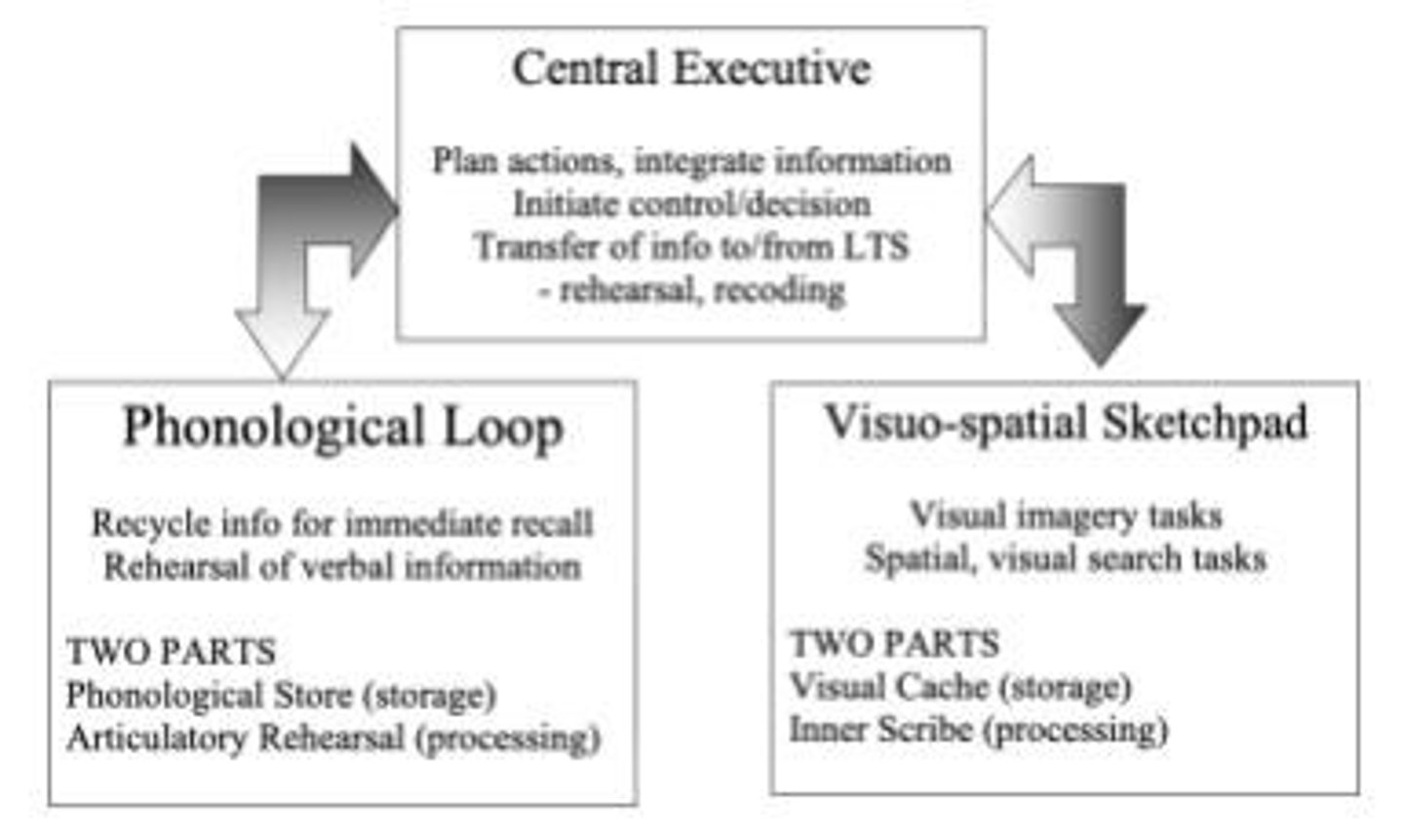
What are the two subsystems of Working Memory (WM)?
The two subsystems are the phonological loop and the visuo-spatial sketch pad.
What role does the central executive play in Working Memory?
The central executive retrieves rules and facts from long-term storage to solve problems.
What is the phonological loop responsible for?
The phonological loop is responsible for the storage and rehearsal of verbal information.
What is the articulatory suppression effect?
It demonstrates that memory for words is poorer when individuals are tasked with repeating a word aloud while trying to recall a list.
What is the phonological similarity effect?
It refers to the difficulty in remembering words that sound similar, as they can get confused in the phonological store.
What evidence supports the use of visual codes in Working Memory?
Mental rotation tasks by Shepard & Metzler (1971) showed that visual codes can be used to temporarily store and manipulate information.
What does the dual-task method assess in Working Memory?
It assesses whether different tasks utilize separate WM systems or interfere with one another.
What were the primary tasks in Logie, Zucco & Baddeley (1990) study?
The primary tasks included visual memory span and letter memory span, requiring the visuo-spatial sketchpad and phonological loop, respectively.
What was concluded from the dual-task conditions in the study?
The study concluded that there is interference between tasks that utilize the same WM system, supporting the notion of separate subsystems.
What is the role of the visuo-spatial sketch pad?
It is responsible for the maintenance and processing of visual and spatial information.
How does the capacity of Working Memory affect task performance?
The limited storage and processing capacity of WM can restrict performance on concurrent tasks.
What is the significance of the central executive in arithmetic tasks?
The central executive retrieves computational rules and facts from long-term storage to solve arithmetic problems.
What happens to memory performance when tasks demand resources from the same subsystem?
Performance drops significantly when two tasks that require the same WM subsystem are performed simultaneously.
What is the function of the articulatory loop in Working Memory?
The articulatory loop actively refreshes verbal information to prevent it from being forgotten.
What is the impact of concurrent verbal tasks on memory recall?
Concurrent verbal tasks hinder the ability to rehearse and retain information in memory.
What type of information is stored in the phonological store?
The phonological store holds verbal information passively and requires rehearsal to maintain it.
What does the term 'working memory' refer to?
Working memory refers to an active system for temporarily storing and manipulating information.
What are the three core systems of working memory (WM)?
Central executive, phonological loop, and visuo-spatial sketchpad.
Which brain areas are primarily activated during the phonological loop tasks?
Left-hemisphere parietal and frontal lobe, including Broca's area.
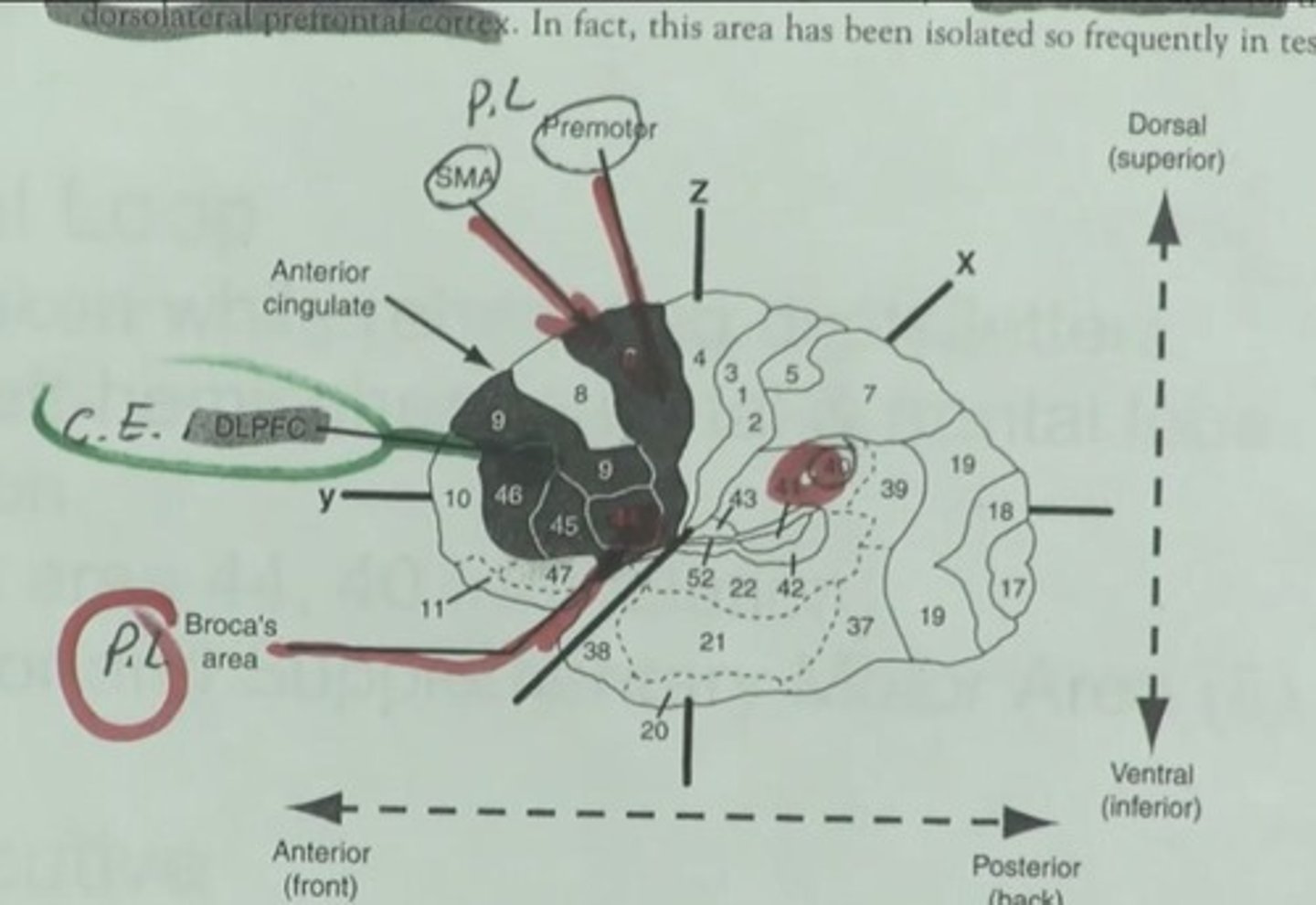
What is the role of the central executive in working memory?
It manages task switching and dual tasks.
What brain region is associated with the visuo-spatial sketchpad?
Mainly right hemisphere areas, including the occipital cortex and posterior parietal lobe.
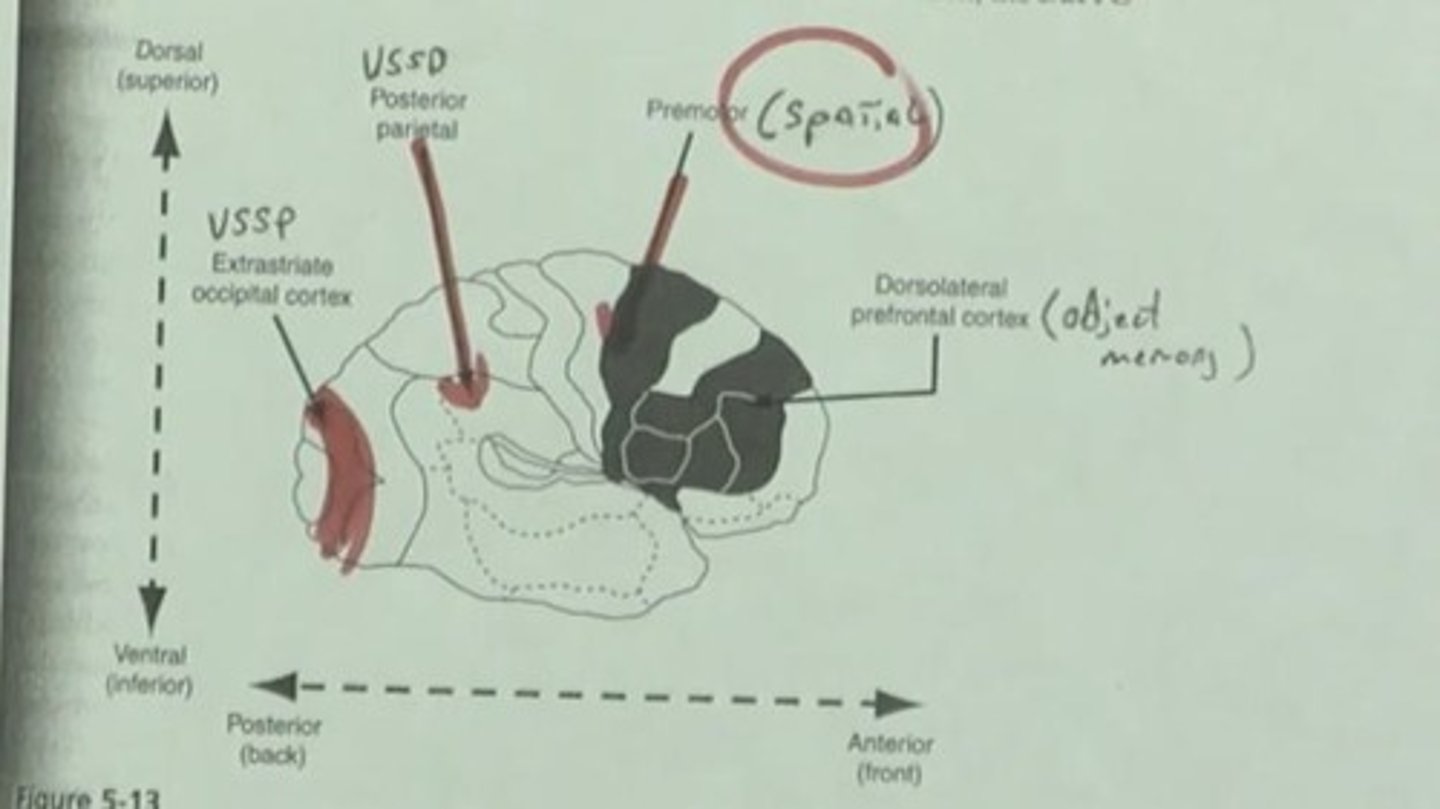
What task did Dobbs & Rule (1987) use to study the central executive?
Paced Auditory Naming Task (PANT).
What was the primary task in Johannsdottir & Herdman's (2010) driving study?
Drive and report relative locations of surrounding cars.
What secondary tasks were used in the driving study by Johannsdottir & Herdman?
Verbal (rhyming task) and spatial memory (tapping a pattern on keypad).
What did Heenan & Herdman's study conclude about conversation while driving?
Conversation utilizes working memory and lowers driver awareness of other cars.
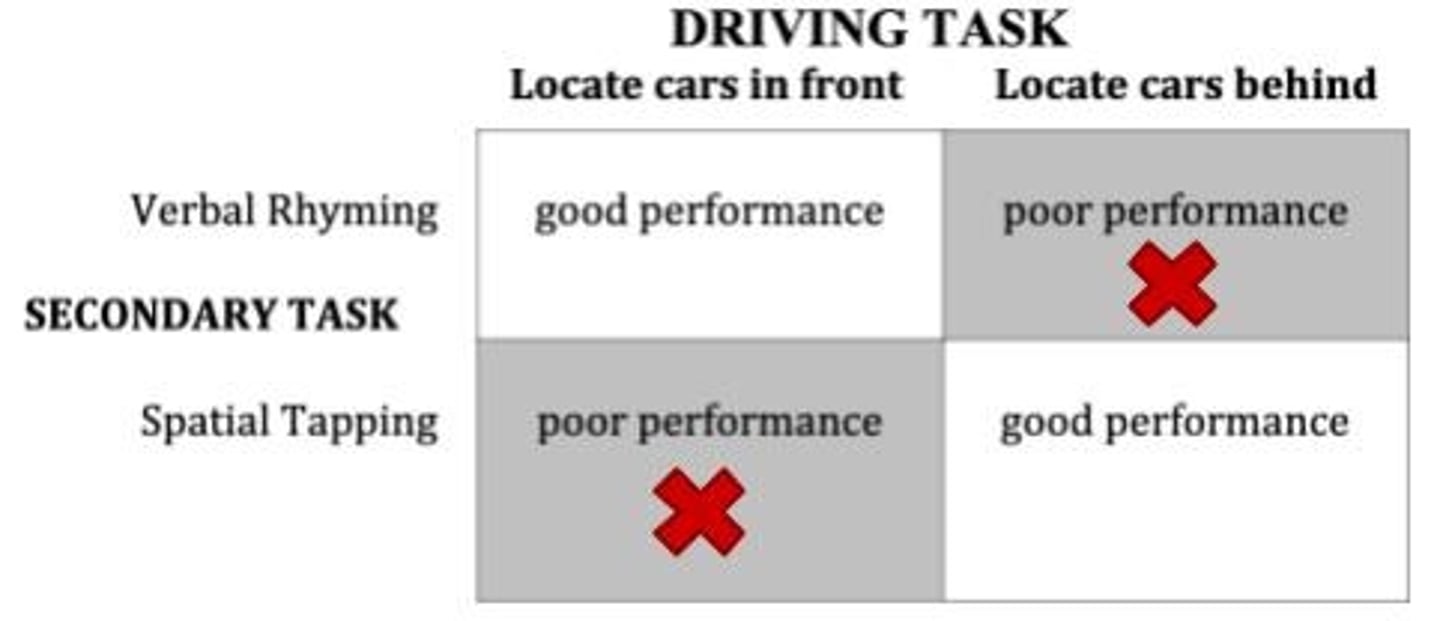
What is the Sternberg scanning task designed to measure?
The time it takes to retrieve information from short-term storage (STS).
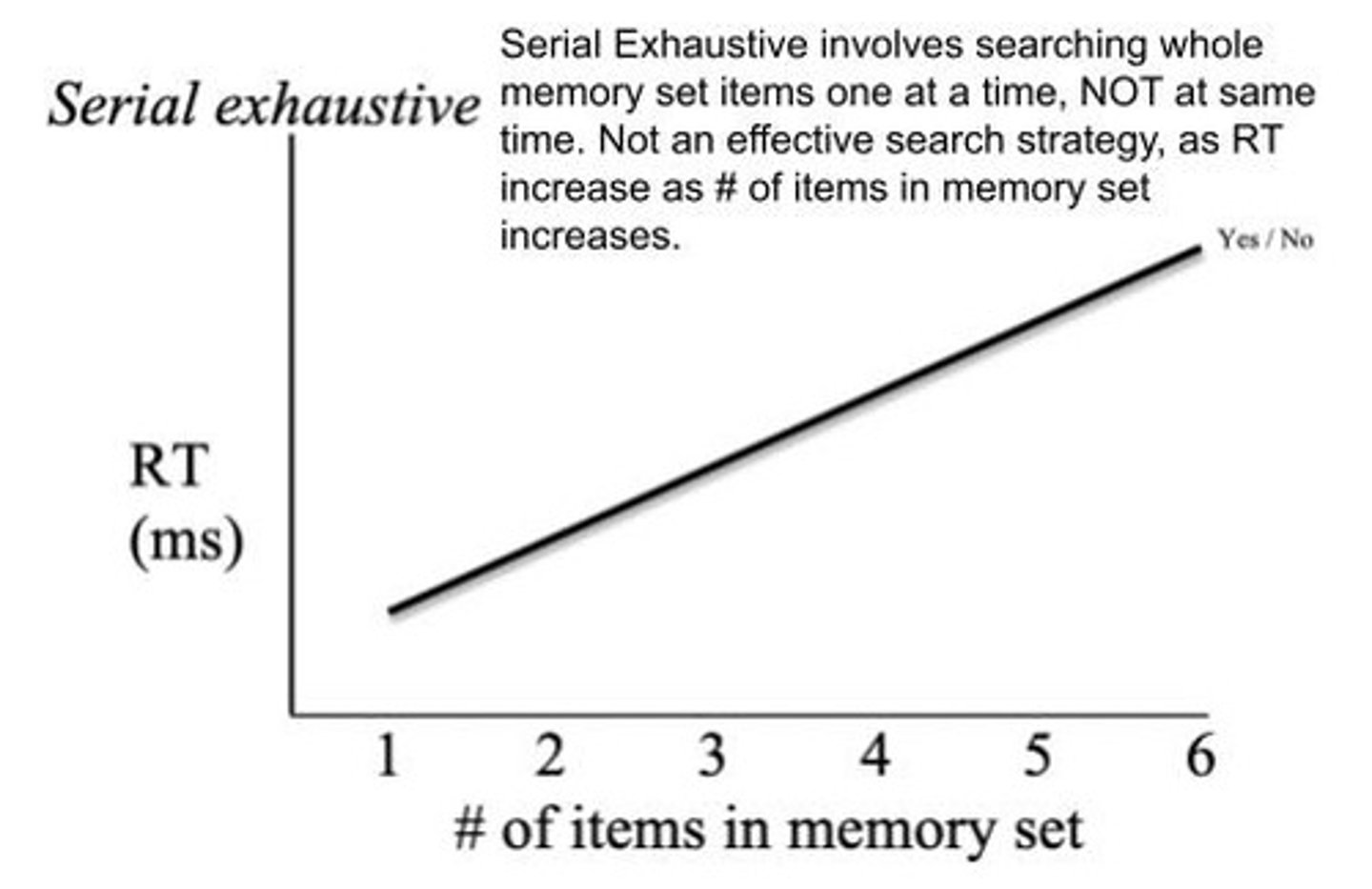
What are the three hypotheses regarding search in short-term storage (STS)?
Parallel search, serial exhaustive search, and serial self-terminating search.
What type of search does Sternberg's data support for STS?
Serial exhaustive search.
What is the average response time to encode and respond in Sternberg's task?
Just under 400 ms (exactly 397.2 ms).
What is the additive factors logic in memory research?
It isolates stages in a serial process to understand how different factors affect response time.
What was the outcome of the class demo comparing phonemic and semantic encoding?
The semantic group recalled more words (average of 8.4) than the phonemic group (average of 4.9).
What are the two assumptions regarding memory persistence in levels of processing?
Memory persistence is not affected by rehearsal (shallow processing) and depends on encoding level (deep processing).
What did Craik & Watkins (1973) find regarding rehearsal and memory persistence?
They found that rehearsal does not affect memory persistence.
What is the role of orienting tasks in memory encoding?
They help determine the type of encoding (physical, phonemic, semantic) that influences memory retention.
What is the relationship between rehearsal cycles and recall probability?
There is no relationship between the number of rehearsal cycles and the probability of recall.
What does the level of encoding affect in memory retrieval?
The level of encoding affects the ability to retrieve information from short-term storage (STS).
What types of orienting tasks were used in Hyde and Jenkins' study?
Tasks included counting letters, checking for the letter 'E', and pleasantness rating of words.
What is the difference between incidental and intentional learning?
Incidental learning occurs without the intention to remember, while intentional learning is done with the purpose of remembering.
What types of orienting tasks did Craik and Tulving use in their 1975 study?
They used physical, phonemic, and semantic orienting tasks.
What is incidental recall?
Incidental recall is the ability to remember information that was not intentionally learned, acquired as a byproduct of another activity.
What did Bower and Karlin (1974) study regarding nonverbal material?
They studied how different orienting tasks affected memory recall, focusing on likability and honesty judgments.
What is the capacity and duration of sensory memory?
Sensory memory has a duration of 250 milliseconds and a large capacity.
What is the duration and capacity of short-term storage (STS)?
STS lasts 15-20 seconds and has a limited capacity of 7 ± 2 items.
What are the components of working memory?
Working memory includes the phonological loop, visuospatial sketchpad, and central executive.
What is trace decay theory in memory?
Trace decay theory suggests that memories fade over time unless they are rehearsed.
What did Jenkins and Dallenbach (1924) find regarding memory retention?
They found that memory loss is not solely due to trace decay, as those who slept during the retention interval recalled better than those who were awake.
What are the two types of interference in memory?
Proactive interference occurs when old information interferes with new learning, while retroactive interference occurs when new information interferes with old learning.
What is the paired-associate learning task?
It involves learning pairs of items and recalling them during a test phase, which can reveal interference effects.
What is the encoding specificity principle?
The encoding specificity principle states that memory retrieval is most effective when the context at retrieval matches the context at encoding.
What did Smith, Glenberg, and Bjork find in their study on context and memory?
They found that memory is aided when retrieval cues available during retrieval match those encoded during learning.
What is state-dependent learning?
State-dependent learning is when recall is better if the individual is in the same mood during retrieval as during encoding.
What did Loftus, Miller, and Burns study regarding eyewitness memory?
They studied how questions posed after an event could alter memory of that event, demonstrating the malleability of memory.
How did the wording of questions affect memory recall in Loftus and Palmer's study?
Different wording led to significant differences in estimated speeds and recall of details, indicating that memory can be altered by suggestion.
What conclusion can be drawn from research on eyewitness reports?
Eyewitness memories are not perfect and can be easily altered by re-encoding and suggestive questioning.